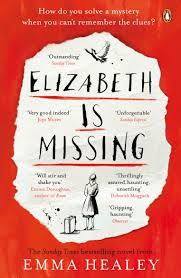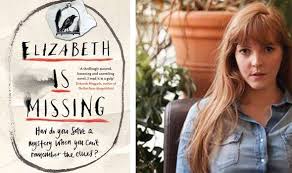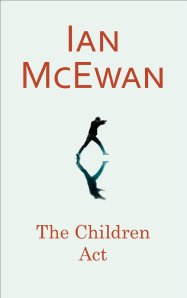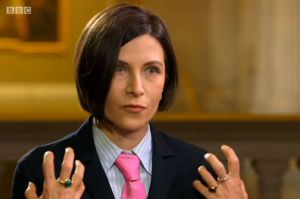‘Educated’ Tara Westover Penguin Books 2018
September 6, 2018 at 6:06 pm | Posted in Biography, Educated, Great for Book Clubs | 1 CommentThis book is extraordinary.
This story is extraordinary.
Tara Westover is extraordinary!
Tara Westover grew up in Bucks Peak Idaho in mountainous terrain in rural America. Her family were devout Mormon’s, her father a radical preparing for the ‘End of Days’ her mother a midwife and herbalist, she had a violent older brother and another brother and sister just trying to make their way like her.
Westover never went to school, never saw a doctor, her birth was never even registered – she didn’t exist in the eyes of the state. Her fathers’ suspicion of government, and poor mental health, degenerated as his family grew. Westover worked in her father’s scrapyard as a child and young teenager and her fathers disregard for his children’s safety in the scrapyard and in everyday life burgeons on the criminal and at times forces you to but the book down for a while as it’s so hard to stomach.
Age sixteen Tara Westover decides to educate herself against her family’s strong wishes and her journey of education takes her all the way to Harvard and Cambridge! Her talent cannot be held back even though the struggle of living her life applying her talent to the world while attempting to remain loyal to her family cause her a very large and personal struggle.
Tara Westovers extraordinary eye for describing what it is to live along with her beautiful human insights on life combined with her uncommon upbringing create a story described with a heart as open as that of God himself making this story and how it is written almost divine. I can’t recommend it highly enough.
Tara Westover is a modern day heroine.
The book in haiku:
Bucks Peak Idahio
Family fidelity
The world is calling
When Breath Becomes Air Paul Kalanithi Vintage 2016
August 3, 2018 at 1:13 pm | Posted in Biography, Uncategorized, When Breath Becomes Air | Leave a comment
For those with the nerve to look into the face of death Paul Kalanthi’s story of receiving a terminal illness diagnosis at the age of just thirty-six is a story that will bring you face to face with the dragon.
Paul Kalanithi was a talented neurosurgeon with a degree in English Literature which he has used so eloquently to write his story of life in the face of a diagnosis of inoperable lung cancer. Through his writing Paul looks to answer the questions of ‘how to live a meaningful life’ and ‘how to live a life that is good enough’ for himself and as a gift for us the reader.
Amongst the honesty and poetry of Paul’s words as he searches for these answers, Paul’s story of receiving his diagnosis, his treatments and final passing is heartbreaking but it also donates the loan of Paul’s honesty and valour to the reader to use to bear to look into the face of death.
Despite the subject matter this book is not dark and depressing but is an affirming and focused exploration of what it is to live and love in the world and to die and leave the world. Unsettling, poignant, poetic and necessary.
The book in haiku; when breath becomes air, when doctor becomes patient, when we look at life
The Winter War, Philip Teir, Serpents Tail 2013
February 1, 2016 at 9:43 pm | Posted in Freedom, Middle Weight Fiction, Popular Fiction, The Winter War | Leave a commentThis debut novel has been compared with Jonathan Franzen’s magnificent ‘Freedom’ but this parallel pays no compliment to either book. The scope and style of ‘Freedom’ is imagined with much more daring and detail than ‘The Winter War’ but as I say the comparison is redundant. The ‘Winter War’ in it’s own style is evocative and thoughtful but is also identifi able as a debut novel. The story chronicles the demise of an upper middle class marriage against the backdrop of a hard Helsinki winter.
able as a debut novel. The story chronicles the demise of an upper middle class marriage against the backdrop of a hard Helsinki winter.
The Winter War of 1939-1940 was fought between Finland and the Soviet Union and took the same length of time to be over as did the marriage of the two main characters of ‘The Winter War’ Max and Katriina.
The prose is gentle and subtle an ebbing and flowing of the mind of Max of his going back and forth between decisions in an undefined search. The secondary story of Max and Katriina’s daughter moving to London to pursue an education in fine Art and assert her bohemian side is an interesting but disconnected piece.
This novel treats you to the experience of an unforgiving Helsinki winter and the unforgiving implosion of a marriage neglected and fermented. To paint such pictures is a tribute to the new author whose next novel I’ll be sure to read also. As we all are, this novel is perfect in it’s own imperfections.
The book in haiku: Helsinki snowstorm, falling silently at night, too heavy to dig
The Signature of All Things
February 1, 2015 at 1:15 pm | Posted in Uncategorized | 3 CommentsTags: Book Clubs, book review, Books, good book reviews, Great Reads
The Signature of All Things
Elizabeth Gilbert
Bloomsbury 2013
What a wonderful treat ‘The Signature of All Things’ is. I was initially put off buying this book by Elizabeth Gilbert’s fame from the arguably precocious ‘Eat Pray Love’ but thank goodness I suspended my judgement because this novel is truly awesome in every sense of the word. It’s literary, compelling, different and spiritually underscored. It follows the life of Alma Whittaker a girl born at the turn of the century in the 1800’s to a father who has built an import export empire on his own steamy grit, taking no prisoners on the way. Alma is intelligent, diligent but not conventionally good looking and in no way destined for a typical life of a young lady of her time.
Alma develops a lifelong love for botany and a strong business mind under her father’s tutelage which is sometimes welcome and oftentimes forced. Her work takes her to deep questions about evolution which in turn take her on several journeys; emotional, physical, financial and spiritual
I can’t do this book near enough justice with my review. Alma is such a real and complete character, the setting of Philadelphia is such an apt backdrop for this story and every step it takes you on just feels so right and most splendid of all where the story ends is so glorious for professional women.
The book in haiku: Read, enjoy, wonder, forget how to eat, pray love, renaissance woman
Its Sarah’s Books 4th brithday! 2014 in review
February 1, 2015 at 12:05 pm | Posted in Uncategorized | Leave a commentThe WordPress.com stats helper monkeys prepared a 2014 annual report for this blog.
Here’s an excerpt:
A San Francisco cable car holds 60 people. This blog was viewed about 1,100 times in 2014. If it were a cable car, it would take about 18 trips to carry that many people.
McEwan reigns
November 11, 2014 at 10:24 pm | Posted in Great for Book Clubs, Middle Weight Fiction, The Children Act | 2 CommentsTags: Book Clubs, book review, good book reviews, Great Reads, new fiction, recomended reads
Ian McEwan ‘The Children Act’, Jonathan Cape 2014
Ian McEwan is a master storyteller. In his latest novel he brings us on a journey into the moment of a life of a very successful high court judge, Fiona and the personal and legal challenges she simultaneously faces.
McEwan employs his impressive skills of engineering a plot and grinding the wheels of prose to tenderly lament a marriage in peril after thirty years and to bring us on the journey of Fiona’s greatest professional challenge – the case of a seventeen year old Jehovah’s Witness boy who is refusing a lifesaving blood transfusion on the grounds of his religion.
To compare this novel to ‘Solar’ or ‘Saturday’ would be an easy thing to do but not appropriate, for this novel relays something that has provoked McEwan’s sensibilities and interest and perhaps it is this suspect personal feel that distinguishes this novel from his others.
The Guardian, in their review of ‘The Children Act’ observed that McEwan is fascinated with ‘great institutionalized authorities’ in the upper echelons of society – his protagonist in ‘Saturday’ from the esteemed medical profession and in ‘Solar’ a research scientist. Now in ‘The Children Act’ a high court judge. His deluges into Fiona’s personal difficulties however feel more poignant and sit a little less easy than journeys with his previous characters whose theatrical personalities lend themselves to plots of great scope and pace.
What does McEwan feel about Fiona and her situations really? I’m not sure by the end of the novel but I know her view of the world and her vantage point from the legal profession captured his imagination and I felt glad to have been moved by some deeply beautiful prose;
‘It could be just like that, a poisonous obsession, an addiction drawing him away from home, bending him out of shape, consuming all they had of past and future, as well as present.
Either way unbearable.
Unbearable and fascinating. And irrelevant.’
The Children Act in haiku
Legal vantage points
Logic and closed emotions
Verdicts that flounder
The Secret History Donna Tartt
April 4, 2014 at 4:24 pm | Posted in Award winners, Middle Weight Fiction, Popular Fiction, The Secret History | 1 CommentTags: Book Clubs, book review, Book Reviews, bookclub, Bookreviews, good book reviews, Great Reads, popular fiction, recomended reads
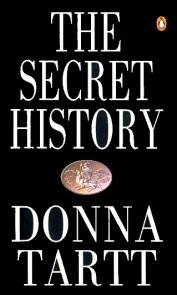
It is understandable how Donna Tartt’s ‘The Secret History’ became a long-term bestseller and conquered a place in so many book lovers hearts. The story centered on a group of young bright affluent students at an exclusive Vermont College in the 1980’s roaming wild and burning through money is exceptionally engaging .and compulsively addictive.
The young group is composed of a variety of apparently sympathetic characters Richard who, unlike his peers, is on a scholarship to the exclusive college and is at great pains to conceal his blue-collar roots, twins Camilla and Charles known for their manners and gentle ways, Henry the emergent leader of the group remarkable for his adaptability to changes in circumstance and ability to mix easily with all sorts of people and also Francis and Bunny who enjoy all life has to offer with great self-assurance. What the characters all have in common is that they are all students of the charismatic erudite Professor Julian Morrow who teaches them Classics exclusively to a level of detail and reverence far above the academic norm.
Inspired deeply by their passionate teacher a few members of the group perform a Dionysian rite one night (a rite designed to work the worshiper into a state of ecstasy in order to feel the power of the gods through wine, dancing and often sexual expression) but the rite has truly gross consequences for the group which go on to drive the plot to even wilder and darker places and the death of Bunny Corcoran (whose death is revealed to the reader in the first line of the novel). 
Do not look for redemption, regret or guilty melancholy from this group, as a reader the novel demands that one must think much bigger when it comes to this motley crew and contemplate openly Donna Tartt’s brilliant subtle suggestions that Henry may himself be the devil incarnate and that in this existential world absolutely anything is possible once you have the nerve and stomach for it.
The plot is set in the familiar routines of college life against the rich dripping backdrop of the classical world of Greek and Latin language, prose and poetry. Donna Tartt’s prose is just so accomplished that at times it feels like God himself has lifted the telephone to call you personally and reveal some select mysteries of the world;
‘…there was never any doubt that he (Henry) did not wish to see us in our entirety, or see us, in fact, in anything other that the magnificent roles he had invented for us: genis gratus, corpore glabellus, arte multiscius, et fortuna opulentus – smooth cheeked, soft-skinned, well-educated, and rich. It was his odd blindness, I think, to all problems of a personal nature which made him able at the end to transmute even Bunny’s highly substantive troubles into spiritual ones.’
The novel in haiku; murderous thoughts fly, money and nerve conquer all, but it takes just one
2013 in review
January 14, 2014 at 1:56 pm | Posted in Uncategorized | Leave a commentThe WordPress.com stats helper monkeys prepared a 2013 annual report for this blog.
Here’s an excerpt:
A San Francisco cable car holds 60 people. This blog was viewed about 750 times in 2013. If it were a cable car, it would take about 13 trips to carry that many people.
Blog at WordPress.com.
Entries and comments feeds.

